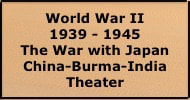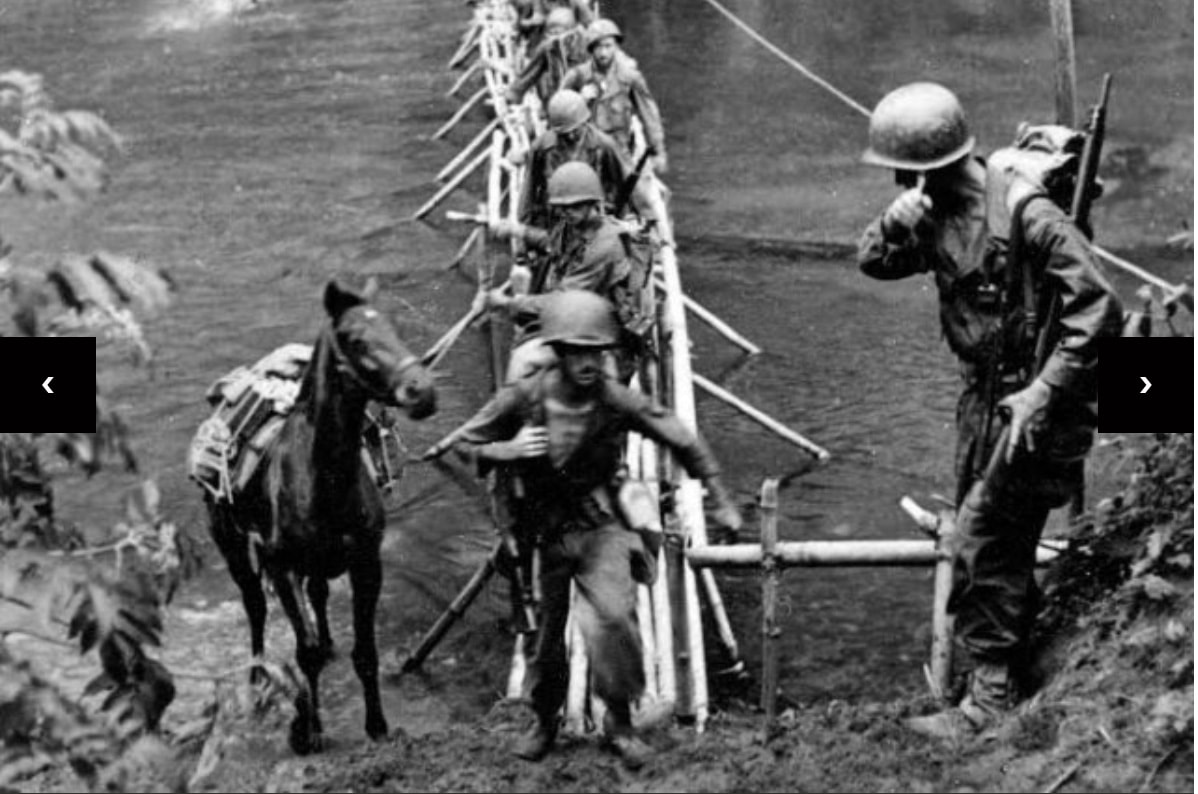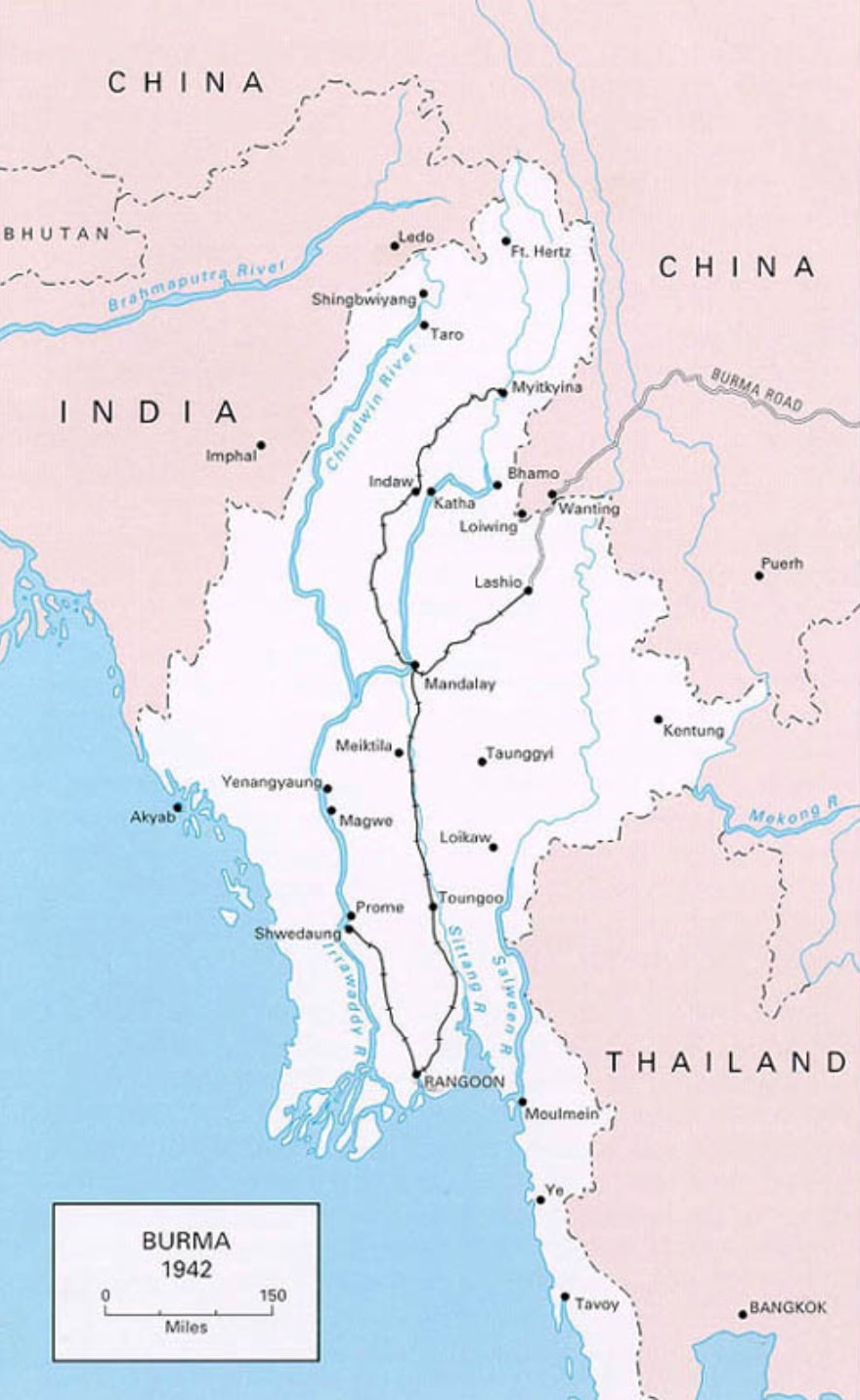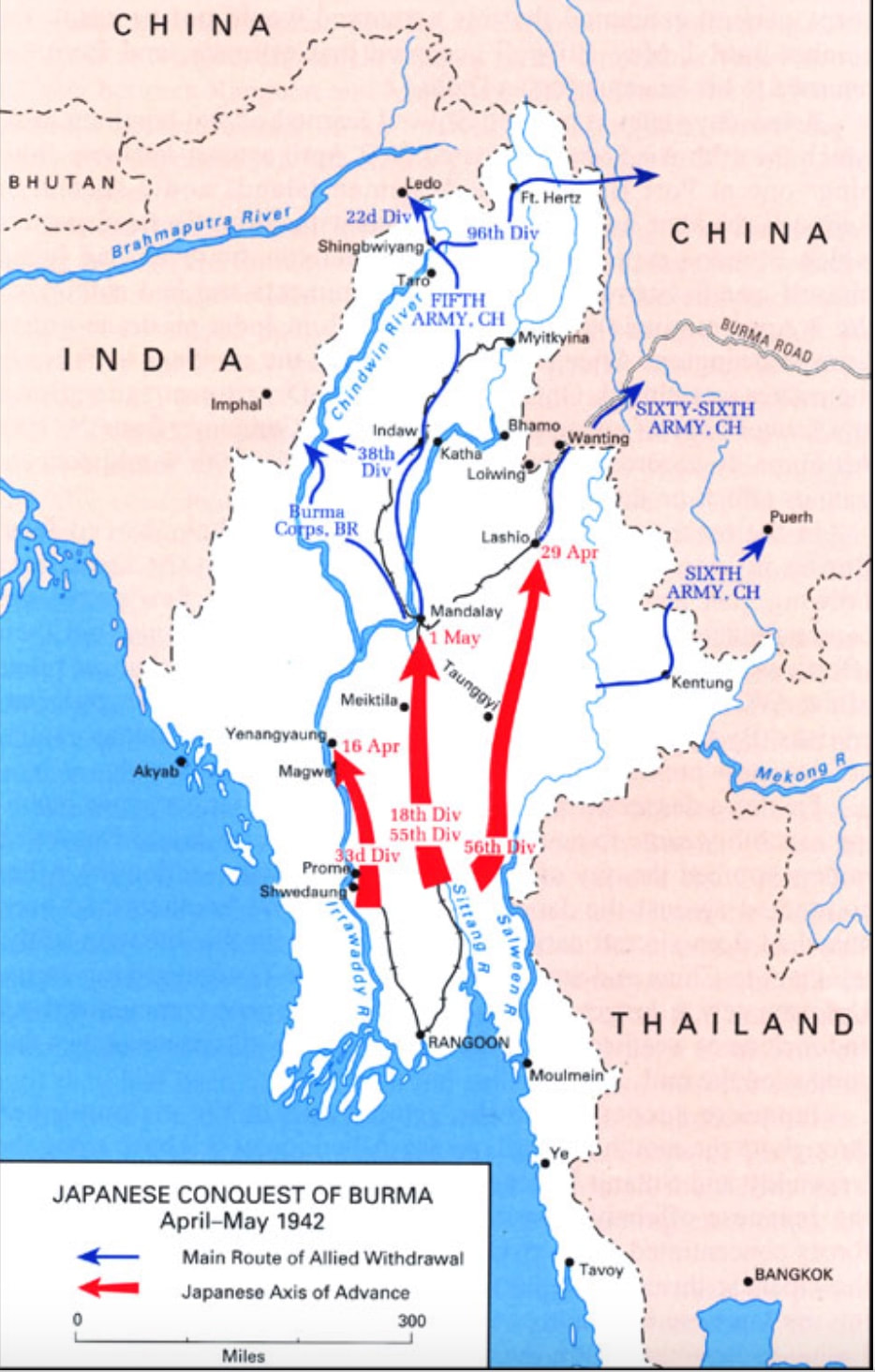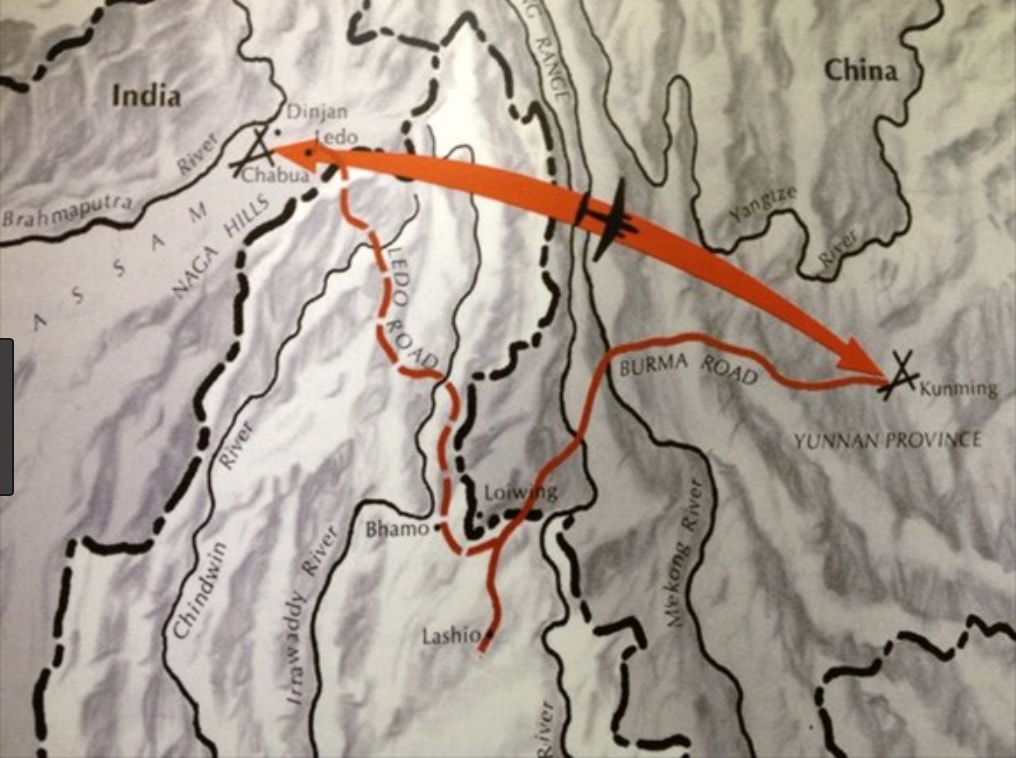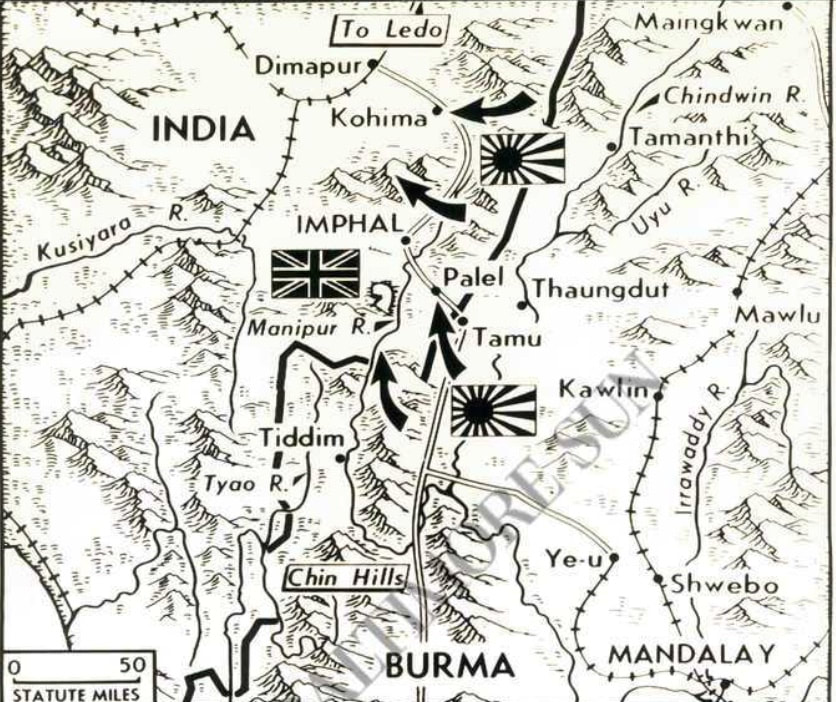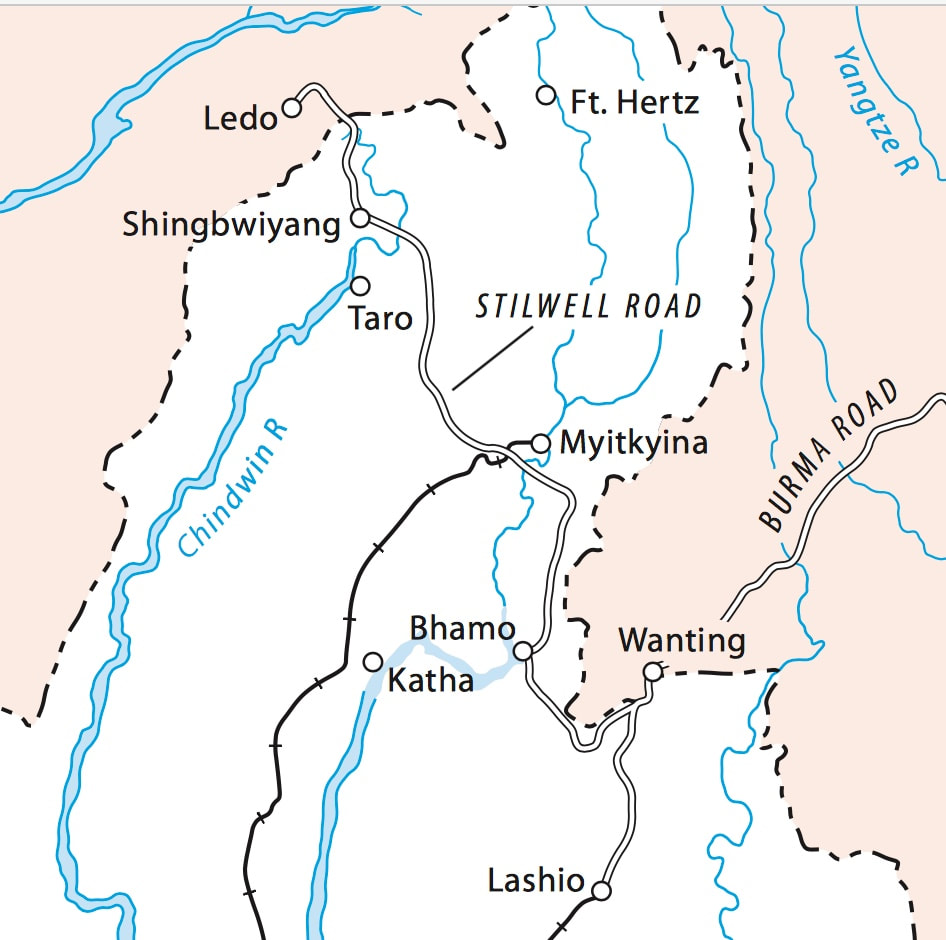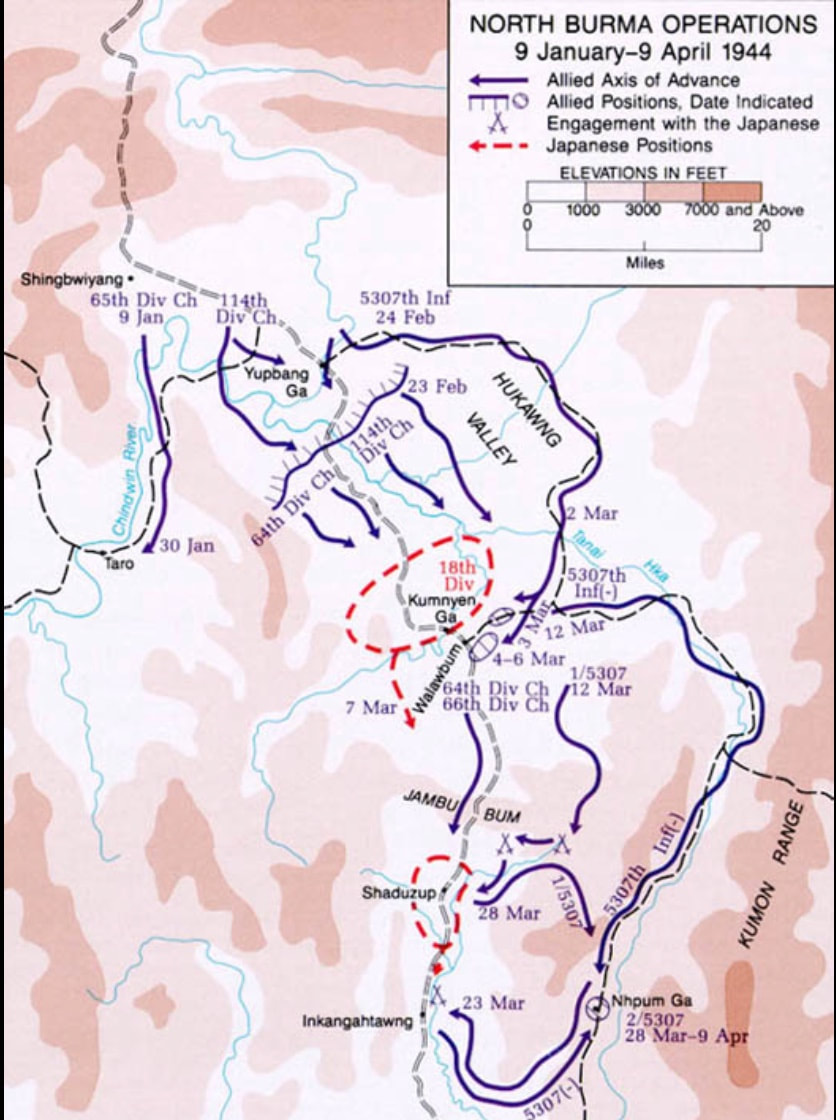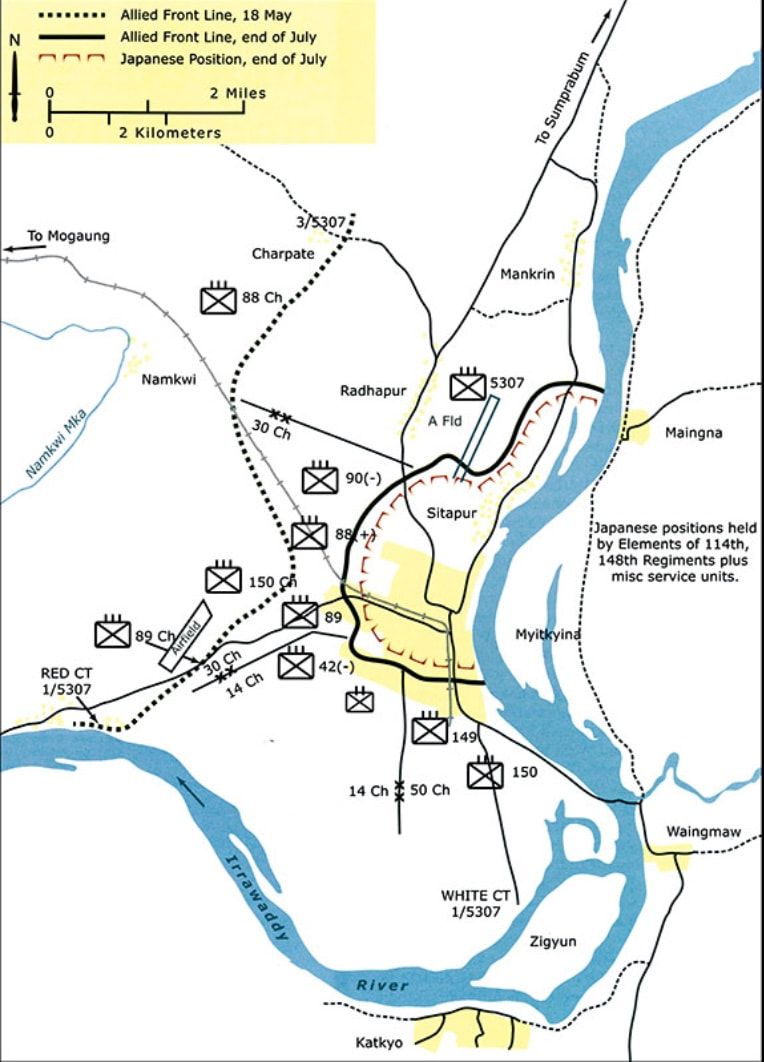bigpigeon.us webpage WWII Japan > China-Burma-India Theater > Burma, 1941-45, © 2024 by Robert A. Christiansen, updated by RAC 14 Feb 2024.
This webpage ties in to the other three China-Burma-India Theater webpages, namely China, India, and Crossing the Hump.
This webpage ties in to the other three China-Burma-India Theater webpages, namely China, India, and Crossing the Hump.
Burma at the Beginning of 1942
|
When the War with Japan began in December 1941, Burma, now known as Myanmar, was one of the many colonies in the British Empire. As the accompanying map shows, Burma was sandwiched between the Republic of China and the large British colony of India to the west.
In December 1941, all shipment of supplies from the Western Allies to the Republic of China was via the Burma Road, from the railhead at Lashio, Burma to Kumning in southwest China's Yunnan Province. To achieve their major goal of shutting down this route, Japanese forces needed only sieze the Rangoon area, the southern terminus of the Burma Railroad. American and British priorities in Burma differed. The British did not Burma to become a springboard for a Japanese invasion of India, the colony sometimes called the Jewel in the Crown. The United States wanted to maximize China's participation in the War with Japan, in order to keep as much of the Japanese military as possible in China, and thus reduce the Japanese ability to enlarge and defend the Japanese Pacific island empire. Although Thailand became a Japanese ally early in the War with Japan, it was not easy for Japan to invade Burma. Their was no land route between the major areas of Thailand and the key areas of Burma, and the sea route, from Bangkok south past the Malay peninsula and Sinapore to Rangoon, was 2,000 miles long. |
I view land combat in Burma during World War II as consisting of four major phases.
- The initial Japanese advance northward in 1942, opposed by British Empire and Chinese troops with American leadership.
- The ensuing two-years plus struggle to push back the Japanese and build the Ledo/Stilwell Road to tie into the Burma Road from the north.
- The ill-fated 1944 Japanese offensive from Burma west into India.
- The final push driving the Japanese south out of Burma.
The Loss of Burma - January - June 1942
|
The Japanese invasion of Burma began on xxx when Japanese troops, coming overland through Thailand, occupied Moulmein east of Rangoon. Later Japanese forces landed by sea near Rangoon.
Rangoon fell at the beginning of March and the Allied defenders of Burma, Indian troops with British leadership and Chinese troops under the nominal command of US Army General Joseph Stilwell, attempted in vain to stop the Japanese advance northward. The British and Indian forces retreated west into India, most of the Chinese troops retreated back into China, and two divisions of Chinese troops retreated into northeastern India. The Japanese did not occupy all of Burma. For instance, Ft. Hertz in the extreme north remained in Allied hands and was used as an emergency landing field. |
New Lifelines to China
|
US planners, desperate to keep China in the war, developed two routes for a new lifeline to China, now that the old Burma Railroad/Burma Road route was lost. Both new routes would begin at railheads near Ledo in Assam in extreme northeast India and end at Kumning in southwest China.
This topic is the subject of the webpage Crossing the Hump. |
The Death Railway
|
While the United States was developing new transport routes to China across North Burma, the Japanese Empire was implementing a land link between the central cores of Thailand and Burma. This link, combined with the Burmese rail and river network, could then support large-scale Japanese offensive operations from Burma.
The Death Railway, built in 1942 and 1943, ran from Ban Pong in Thailand to Thanbyuzayat in Burma. It cost the lives of over 100,000 laborers, including over 12,000 Allied Prisoners of War. Today only a portion of the Death Railway remains. It is best remembered for the fictionalized story of the bridge over the River Kwai. You can still see the second bridge over the Kwai, also built in WW II, at Kanchanaburi near Ban Pong. |
Japanese Invasion of India - Imphal & Kohima - March - July 1944
|
With the completion of the Death Railway from the eastern side of the Malay Peninsula, Japanese forces were better prepared to launch an invasion of India. The immediate goal of this offensive was to cut the rail link from Calcutta to the Ledo area. This link serviced American, British Empire, and Chinese troops in Burma as well as being a link in China supply chain over the Hump.
In long and hard-fought battles supported by aerial resupply, British Empire troops fought back the Japanese advance, inflicting on the Imperial Japanese Army its worst defeat to date in the War with Japan. Perhaps the Japanese hoped that a breakthrough into eastern India would cause an uprising among the Indian population, India in 1944 being a British colony with a strong independence movement. In any event, the Japanese brought along some thousands of Indian collaborators. |
Special Units in North Burma
Most ground combat by US troops in north Burma was done by special units in conjunction with US-equipped Chinese units. These troops generally fought in remote areas and were supported by airdrops or by supplies brought over the completed sections of the Ledo/Stilwell Road.
Burma Trivia:
- Chindits - British Empire troops lead by Ord Wingate. - British Army long range penetration brigade.
- 5307th Composite Brigade, aka Galahad Force, aka Merrill's Marauders - US. Army long range penetration brigade.
- 5332nd Composite Brigade, aka Mars Task Force - two US Army regiments and a Chinese regiment .
- Detachment 101 of the Office of Special Services (OSS) - American led consisting mostly of Burmese Kachin tribesmen.
Burma Trivia:
- Mules were a standard mode for local movement of supplies, but horses were also used. When the 112th Cavalry Regiment was converted to an infantry unit on New Caledonia in 1943, its Australian horses were sent to Burma for use by Galahad Force.
- In Phoenix around 2005, I had the pleasure of meeting the regimental mule officer from one of the Mars Force regiments.
The 1944 Chinese and American offensive in North Burma
|
By the beginning of 1944, construction on the Ledo Road, referred to as the Stilwell Road on the accompanying map, had progressed over 100 miles from its starting point in Ledo, India southeast to Shingbwiyang, Burma. However, three hundred miles remained before joining the existing Burma Road at the proposed junction of Mong-Yu, Burma, just southwest of Wanting, China.
I summarize the 1944 Allied offensive southward through northern Burma thusly:
By January 1945, Japanese forces had been driven from the Ledo Road area, and the Ledo Road was complete. The first convoy of 113 vehicles left Ledo on 12 January and arrived in Kumning, China 4 February 1945. The convoy made two multi-day stops to avoid residual combat. |
Following will be removed.
Burma Liberated
Sources for Big Pigeon's CBI Theater > Burma, 1941-45 webpage:
Pottawattamie Area WWII Dead - CBI Theater > Burma, 1941-45:
† Evans, Robert Samuel, SN 0-489-062, US Army, Pott. Co.
- The webpage header photo, Merrill's Marauders, was found at https://www.army.mil/article/173880/expendable_wwii_merrills_marauders_survive_into_their_100s.
- The Burma in 1942 map is courtesy of https://history.army.mil/brochures/burma42/p07(map).jpg.
- The Japanese Conquest of Central Burma map is from https://en.wikipedia.org/wiki/Japanese_invasion_of_Burma.
- The Burma Road Replacement Routes map is courtesy of the Air Force Historical Foundation.
- The North Burma Area in WW II map, aka The Ledo Road, is courtesy of flickr.com. This is a well-designed and drawn and informative map.
- The The Death Railway map is from https://en.wikipedia.org/wiki/Burma_Railway#/media/File:Death_Railway.png.
- The Battles of Imphal and Kohima map is from commons.wikimedia.org.
Pottawattamie Area WWII Dead - CBI Theater > Burma, 1941-45:
- Taken from Big Pigeon's WWII Dead module.
† Evans, Robert Samuel, SN 0-489-062, US Army, Pott. Co.
- 5307 Composite Unit (Merrill’s Marauders); WIA at Nhpum Ga, NW of Myitkyina, Burma, DOW 11 Apr 1944 in hospital, Ledo, Assam, India; CBI Theater > Burma, 1941-45.
- Co. F, 475th Inf. Regt. (the MARS long range penetration unit which fought in northern Burma), DOW 2 Feb 1945, northern Burma; CBI Theater > Burma, 1941-45.
- 490th Bomb. Sqdn., 341st Bomb. Gp., Tenth Air Force, based at Moran Airfield, Assam, India; North American B-25D Mitchell #43-3612 navigator-bombardier with pilot Frank M. Finney; KIA 24 Oct 1944 near Maymyo, Burma; engine likely struck by ground fire and aircraft crashed; all six dead; CBI Theater > Burma, 1941-45.
